Wheel gun fans, it would seem your time has finally come. The semi-auto pistol fad is finally winding down and revolvers are poised to once again take the throne as king of the handguns.
Okay, not really. But walking the floor at this year’s SHOT Show in Las Vegas, it’s clear that revolvers are well represented — particularly, double action self-defense revolvers. I plan to get my hands on a few of these this year for detailed reviews. In the meantime, here’s a quick look at a few of the major new releases.
Colt Cobra
I mentioned this one briefly last week in my review of the Kimber K6s. After a two decade hiatus, Colt has returned to the double action revolver game. The new Cobra is a six-shot, 23-ounce snub nose chambered for .38 special +P. Fans of the original Colt Cobra may remember it as the lightweight aluminum-frame counterpart of the Colt Detective Special, but the new model has a stainless steel frame. The front sight is a red fiber optic with a fixed trench-style rear sight. A tritium front sight will also be available, as will a version of the Cobra with a blued finish.
In the K6s review, I mentioned that the new Kimber revolver has the best factory double action trigger of any small-framed revolver I’ve used previously (though the Ruger LCR is close). Well, the floor sample of the new Colt Detective Special has as good a factory double action trigger as I’ve found on a revolver of any size. Maybe too good, in fact. On any other revolver, I would be concerned about reliable primer ignition with such a light trigger. I didn’t make it to the SHOT Show range day this year, but according to some friends, as it turns out, the demo Colts there did exhibit light strike issues. It’s not uncommon for pre-production SHOT Show sample guns to have a few minor glitches to work out, but that seems like a pretty major oversight that I’m hoping Colt will iron out before the guns ship.
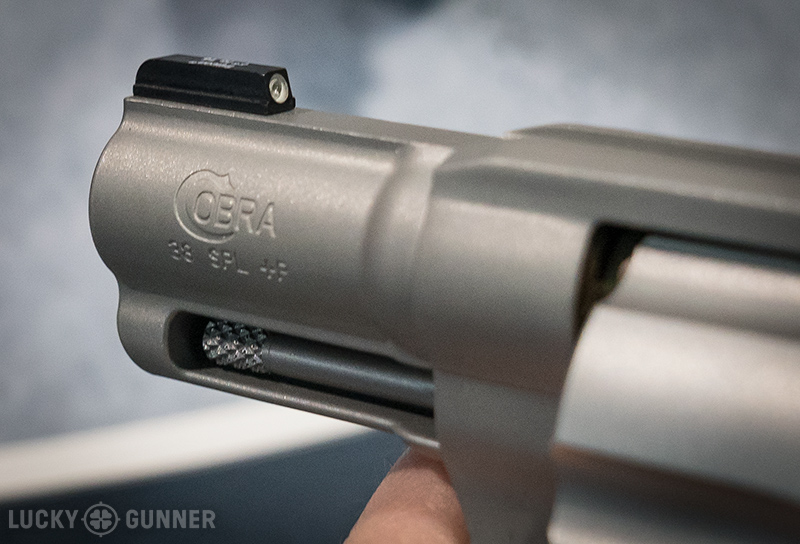
It’s rumored that this new Cobra is only the first of an entire line of forthcoming Colt double action revolvers. I would love to see that come to fruition, but I’m cautiously optimistic. Despite Colt’s history with revolvers, they aren’t just picking up where they left off. The new guns are being built on new machines, mostly by people who have never made Colt revolvers before. Only time will tell whether the new Colts deserve to inherit the reputation established by the classic Colt wheel guns of the 20th century.
| Colt Cobra Technical Specs | |
| caliber | .38 Special +P |
| capacity | 6 |
| weight | 25 ounces |
| barrel length | 2 inches |
| sights | fiber optic front, fixed trench rear |
| action | double action with exposed hammer spur |
| MSRP | $699 |
Smith & Wesson
None of Smith & Wesson’s new revolvers for 2017 are totally new models, but they did come up with several attractive variants of existing models.
Smith & Wesson 2.75-inch Model 66 Combat Magnum
As longtime readers know, the somewhat rare 3-inch S&W Model 66 is one of my favorite revolvers ever. Built on Smith’s medium K-frame, it’s a 6-shot .357 magnum that, to me, perfectly splits the difference between a concealable small frame snub nose and a full size 4-inch service revolver like the Smith & Wesson L-frame 686, the Ruger GP100, or the Colt Python. After ceasing production of the 66 for a few years, S&W re-introduced a 4-inch model three years ago, and this year they’re following it up with a 2.75-inch version. It’s a quarter inch shorter than my favored 3-inch, but it still has a full length ejector rod, which makes it a big improvement over the old 2.5-inch model that was once a regular catalog item. It also comes with a very nice set of rubber grips that fit my hands surprisingly well despite the presence of the much-maligned finger grooves.
I’ve been able to get some impressive velocities out of my 3-inch 66 (which technically has a ~3.2-inch barrel) with defensive .38 special and .357 magnum loads, even outpacing some of the 4-inch guns I’ve tried on the chronograph. Despite my aversion to any S&W revolvers that come equipped with the internal safety lock, the new 2.75-inch 66 is on my list of revolvers to try out this year, and I’m really curious to find out if it clocks and shoots as well as mine.
| S&W Model 66 Combat Magnum Technical Specs | |
| caliber | .357 Magnum |
| capacity | 6 |
| weight | 33.5 ounces |
| barrel length | 2.75 inches |
| sights | red ramp front sight, adjustable rear |
| action | double action with exposed hammer spur |
| MSRP | $849 |
Smith & Wesson Performance Center Model 986
The S&W 986 is a 7-shot 9mm revolver built on the medium/large L-frame. The original 986 was introduced a few years ago as a Pro Series model with a 5-inch barrel. This new version is geared more toward concealed carry and has a 2.5-inch barrel with an unfluted Titanium cylinder. The lightweight cylinder knocks about 2.5 ounces off the weight of an L-frame snubby with a standard steel cylinder, bringing the total weight of the new 986 to 31.7 ounces.
I think this gun has a lot of cool factor going for it, but I don’t know if it’s something I would recommend as a serious concealed carry gun. The L-frame cylinder is fairly wide, which makes them difficult to comfortably carry in an inside-the-waistband holster. Some guys don’t seem to have much trouble pulling it off with the 2.5-inch 686, and in that case, it comes down to a matter of ballistics and recoil. Is 9mm a superior performer than .357 out of a 2.5-inch barrel? I would imagine the 9mm version has less recoil, but to what degree? The 986 also requires moon clips to function with the rimless 9mm ammunition, which adds complexity and a potential failure point to a platform that many people select primarily for its perceived reliability. I’m sure the new 986 will find plenty of fans who see benefits that I don’t, but I’m going to remain skeptical for the time being.
| S&W Performance Center 986 Technical Specs | |
| caliber | 9mm |
| capacity | 7 |
| weight | 31.7 ounces |
| barrel length | 2.5 inches |
| sights | red ramp front, adjustable rear |
| action | double action with exposed hammer spur |
| MSRP | $1129 |
S&W Performance Center Model 642
The “hammerless” snub nose .38 is a staple of the Smith & Wesson catalog. There have been dozens of variants over the years, but I think S&W has a winner with the new Performance Center 642. The highlight of this model is the action job. The notoriously stiff trigger pull is easily the biggest downside to carrying any of the J-frame Smiths. It’s the reason why the majority of folks who own them couldn’t use one to hit the broad side of a barn from the inside. Apex Tactical has a drop-in spring kit that goes a long way toward alleviating the difficultly of shooting these guns proficiently, but the tuned action on the 642 I handled at the S&W booth is easily an even bigger improvement. Add to that a great set of low profile rubber grips with a wood inlay and no internal safety lock and you’ve got a pretty decent carry revolver. Unfortunately, the sights are still sorely lacking, and I would recommend blacking out the face of the fixed rear and applying some bright nail polish on the front ramp to make them at least somewhat usable. However, by sticking with the basic non-adjustable integral sights, S&W is able to offer the new 642 at an affordable $536 MSRP.
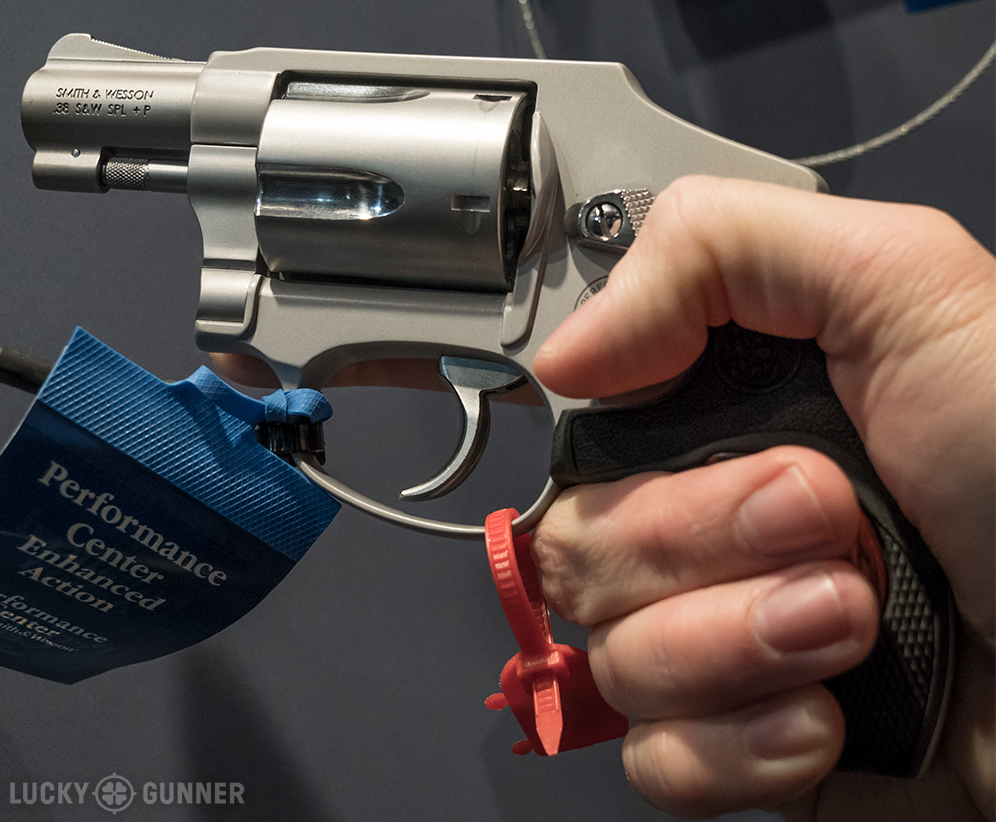
S&W has a second Performance Center Model 642 available this year called the “Model 642 Enhanced Action.” It has the same action job as the vanilla Performance Center 642, but wears a set of longer wood grips that, while attractive, are not as suitable for concealed carry. There’s also a Model 637 Enhanced Action with the same grips and an exposed hammer for single action shooting.
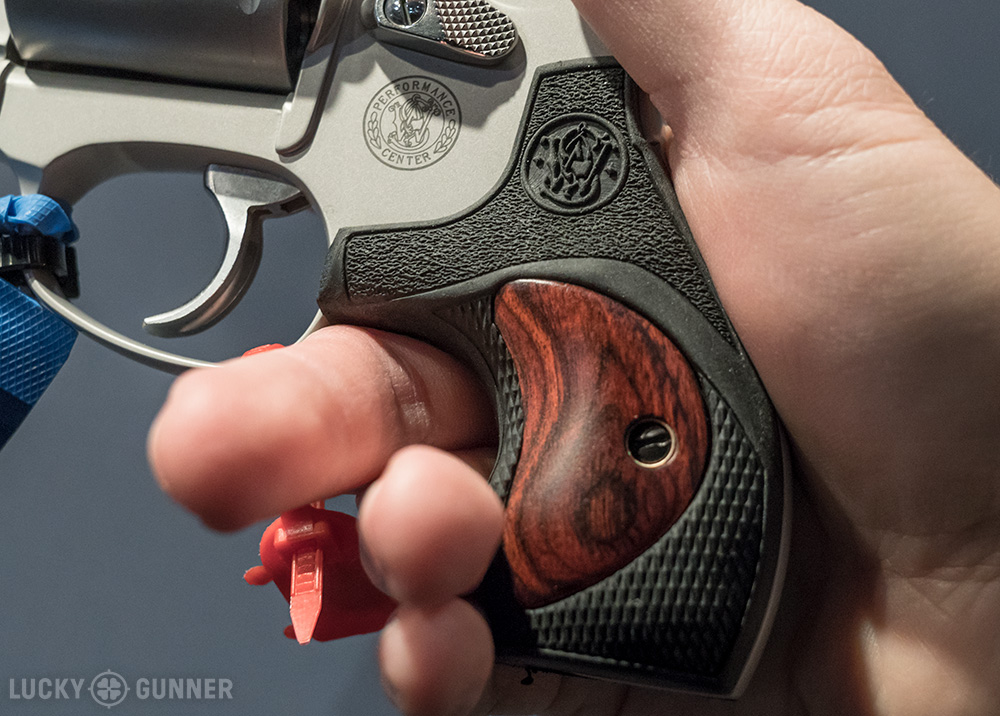
| S&W Performance Center 642 Technical Specs | |
| caliber | .38 Special +P |
| capacity | 5 |
| weight | 15 ounces |
| barrel length | 1.875 inches |
| sights | integral ramp front, fixed trench rear |
| action | double action only with shrouded hammer |
| MSRP | $536 |
Other New Smith & Wesson Revolvers
In addition to the new models above, Smith & Wesson released a few other self-defense oriented revolvers this year. The big trend seems to be 3-inch barrels and unfluted cylinders (22-year-old me would think this is the best year ever). The Performance Center Model 586 L-Comp is a 3-inch 7-shot .357 magnum with a ported barrel. There are also two 3-inch variants of the 7-shot Model 686 — the 686 Plus Deluxe with textured wood grips and the 686 “3-5-7 Magnum Series” with textured wood grips and an unfluted cylinder.
For big-bore revolvers that could potentially pull double duty as wilderness protection and more conventional self-defense against two-legged predators, there’s a new 3-inch version of the Model 629 N-frame .44-magnum and a slightly more compact 2.75-inch Model 69 5-shot L-frame .44 Special.
Additional details and photos are available on Smith & Wesson’s website or their PDF 2017 catalog.
Ruger
Ruger has never had quite as broad a catalog of revolvers as Smith & Wesson, but they managed to put out a couple of new releases this year that have drawn some attention. They are clearly going after some of the more popular of the niche markets that have previously only been served by sporadic offerings from Smith & Wesson.
Ruger .357 Redhawk
The double action Ruger Redhawk has been around for a long time, but since it’s primarily been marketed as a big-bore hunting-oriented gun, I’ve never paid much attention to it. However, the newest Redhawk is a 2.75-inch .357 magnum. And it has an 8-round capacity. To my knowledge, Smith & Wesson is the only company to produce a successful 8-shot .357 revolver up until now.
This this is undoubtedly a fun idea for a revolver, but I’m not sure how much utility it has. It would be a pain to carry for very long because it’s absolutely enormous and it weighs a ton. At 44 ounces, it’s significantly heavier than Smith & Wesson’s counterpart; the 37.8-ounce Performance Center 627. It could certainly be used as a home defense gun, but it’s awkward and top heavy, and probably far more difficult to shoot well than the trusted medium-frame Ruger GP100. Nevertheless, I’m sure Ruger will sell a boatload, and I hope they do, so then maybe somebody can tell me what they actually use it for.
| Ruger Redhawk Technical Specs | |
| caliber | .357 Magnum |
| capacity | 8 |
| weight | 44 ounces |
| barrel length | 2.75 inches |
| sights | ramp front, adjustable rear |
| action | double action with exposed hammer spur |
| MSRP | $1079 |
Ruger .44 Special GP100
Speaking of the GP100, the .357 model is another favorite revolver of mine, and the handgun I’m most likely to recommend to a first-time gun buyer looking for an easy-to-use home defense gun. The 3-inch version in particular is a very well-balanced fighting gun. As of this year, Ruger is now offering a 5-shot .44 Special variant.
Calling this a defensive revolver is a bit of a stretch, but I wanted to include here because, like the .357 Redhawk and the 9mm S&W 986, it’s just plain cool. There isn’t much reason to choose this one over the .357 model for personal protection, but I’m told the .44 Special is capable of some impressive penetration, which might be nice if your target is more likely to be a hard-headed feral hog than a knife-wielding meth-head.
| Ruger .44 Special GP100 Technical Specs | |
| caliber | .44 Special |
| capacity | 5 |
| weight | 36 ounces |
| barrel length | 3 inches |
| sights | red ramp front sight, adjustable rear |
| action | fiber optic front sight, adjustable rear sight |
| MSRP | $829 |
Korth/Nighthawk Sky Hawk
At SHOT Show 2015, Korth, the German gun maker known for their high-end revolvers, was showing off a new 9mm concealed carry snub nose called the Sky Marshall. Two features set the Sky Marshall apart from other 9mm revolvers. First, it did not require moon clips in order to function and extract 9mm rounds. Smith & Wesson and Charter Arms have both offered clip-less 9mm revolvers in the past, but neither model could be considered successful and they didn’t last long. The other unique feature of the Sky Marshall was a frame and cylinder built from the ground up around the shorter case-length of the 9mm cartridge. That allowed it to have a shorter overall length than any 9mm revolver adapted from a .38 special or .357 magnum design. It also gave the gun potential for greater accuracy and muzzle velocity since the 9mm bullet didn’t have to travel through as much unrifled cylinder before reaching the barrel.
Unfortunately, the Sky Marshall had some odd design features like an obtrusive piece of picatinny rail integrated into the right side of the frame. Korth also seemed unable to find an importer who could bring the guns to market in the US. That changed last year when Nighthawk Custom, known for their custom 1911s, announced that they would be taking over importing duties for Korth. Nighthawk has been shipping some of Korth’s other revolvers for a few months now, and in the coming weeks they’re planning to finally release a re-worked version of the Sky Marshall now known as the Sky Hawk.
The new Sky Hawk doesn’t have the silly rail, and there have been a few other design tweaks like a different hammer shape and a more concave contour along the front end of the barrel underlug. The gun will set you back $1699, which might seem pretty steep, but is roughly half the cost of any other Korth revolver (did I mention that they’re made in Germany?).
Fortunately, Nighthawk Custom is not acting as merely an importer for Korth. They have sent a few of their in-house gunsmiths to Germany to learn how to service and repair the Korth products they sell. So that means if you buy one of these things and you have an issue, you won’t have to wait for it to be shipped overseas to get fixed. That might sound like a small thing, but I don’t think it should be overlooked. I have been known to occasionally buy a somewhat obscure and/or foreign firearm now and then, even for defensive use. However, I am extremely reluctant to buy a gun that cannot be sent to a domestic facility if I need a quick repair. So, say what you want about the price tag of the Sky Hawk, but to me, Nighthawk making that investment in training their gunsmiths demonstrates that they are serious about their partnership with Korth.
That said, I wouldn’t suggest you go out and drop $1700 on an as-yet unproven gun and carry it for self-defense. Especially not one with absolutely zero aftermarket support. But I’ll be keeping a curious eye on the Sky Hawk once they start shipping.
| Korth Sky Hawk | |
| caliber | 9mm |
| capacity | 6 |
| weight | 17 ounces |
| barrel length | 2 inches |
| sights | gold bead front sight, windage adjustable rear |
| action | double action with exposed hammer spur |
| MSRP | $1699 |
Chiappa White Rhino 30DS
I’m reluctant to even mention this last one because I personally find it so distasteful. But technically, it is a revolver, and it is new, and it is self-defense oriented. The Chiappa Rhino, the unusual Italian revolver with the barrel aligned with the 6 o’clock chamber rather than at 12 o’clock, has previously been offered in 2-inch, 4-inch, and 5-inch varieties. Fans have been asking for a 3-inch version for a while, and Chiappa has finally obliged. But they have done it in such a way that comes across like a big middle finger to Rhino fans. You want a 3-inch Rhino? Well, now you can have it, but it’s going to look like this…
I couldn’t find the words to accurately convey my feelings about the Cerakoted White Rhino 30DS, so I took to social media to ask a few shooters I know if they could briefly describe their first impressions of the newest Chiappa offering. Some of the best replies were deemed unsuitable for a family-friendly blog, but here are a few of the highlights I can actually publish:
“Another rhino that should be added to the endangered list.”
-Robert Engh
“LOOK AT ME AND TELL ME I’M PRETTY!!!”
–Trevor Fiatal
“It’s the kind of gun a Bond villain’s girlfriend would carry”
-Tim
“Who thought this was a good idea?”
–Tamara Keel
“The cookies and cream magnum.”
–Brian Downes
Couldn’t have said it better myself.
| Chiappa White Rhino 30DS Technical Specs | |
| caliber | .357 magnum |
| capacity | 6 |
| weight | 27.2 ounces |
| barrel length | 3 inches |
| sights | fiber optic front, adjustable fiber optic rear |
| action | double action with exposed hammer spur |
| MSRP | $1465 |
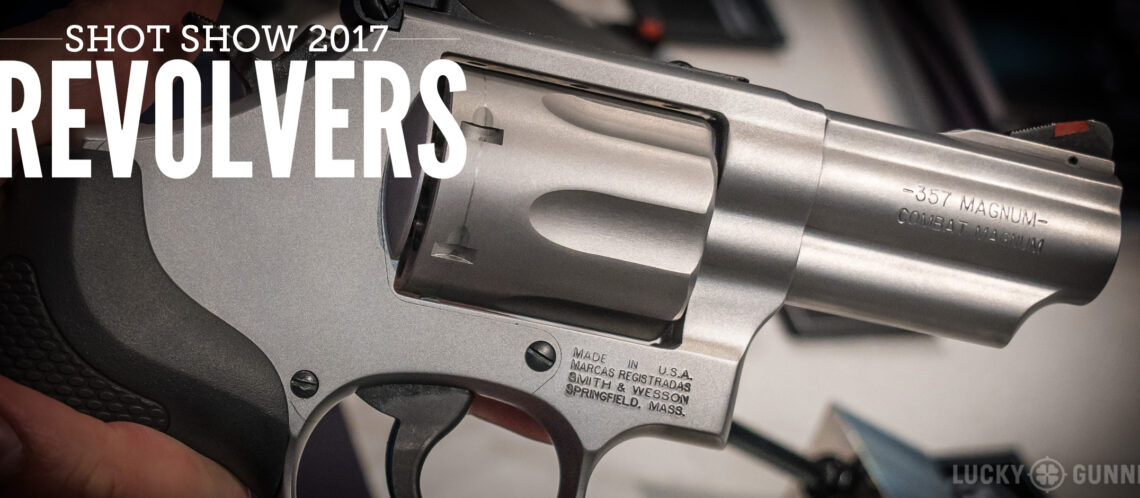



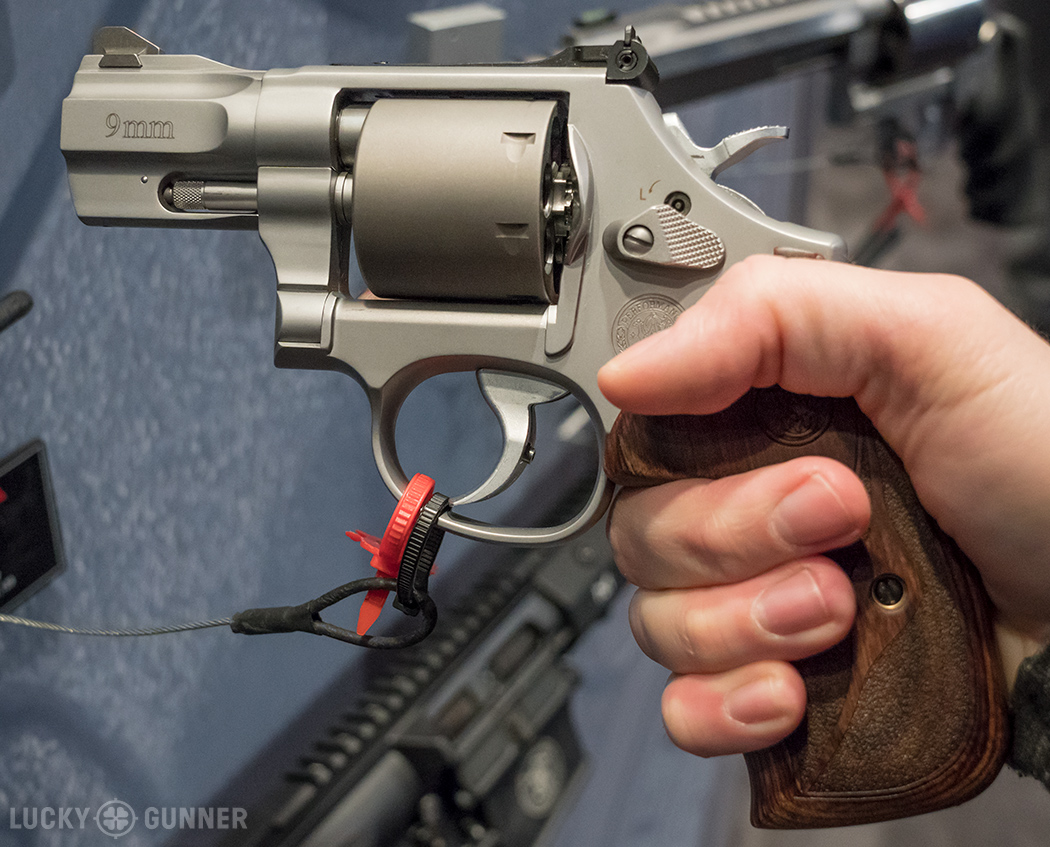
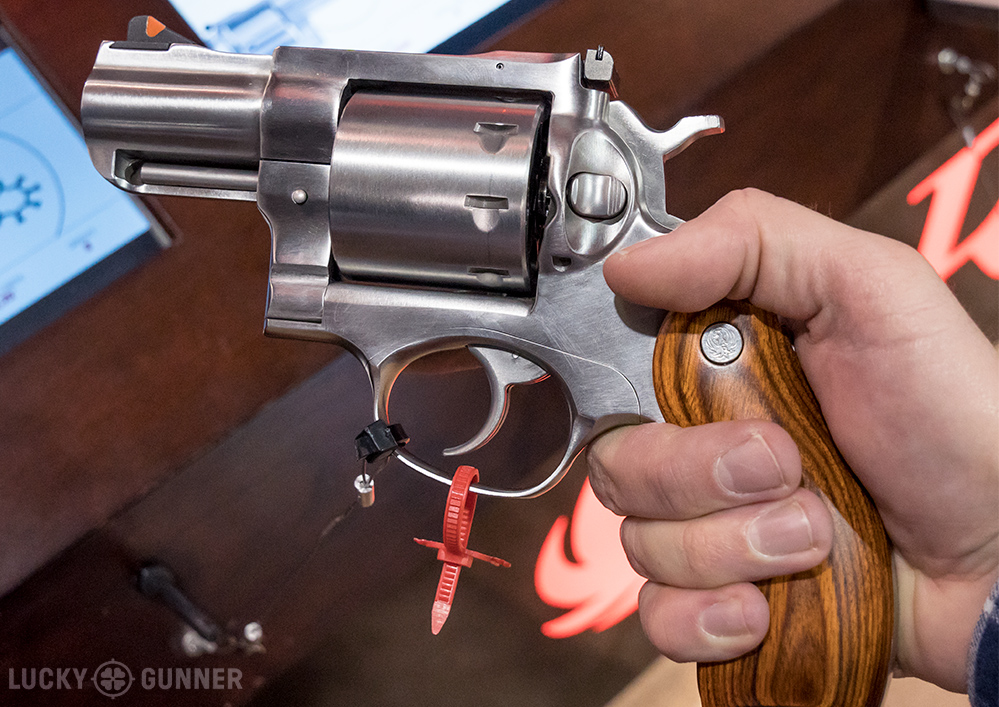
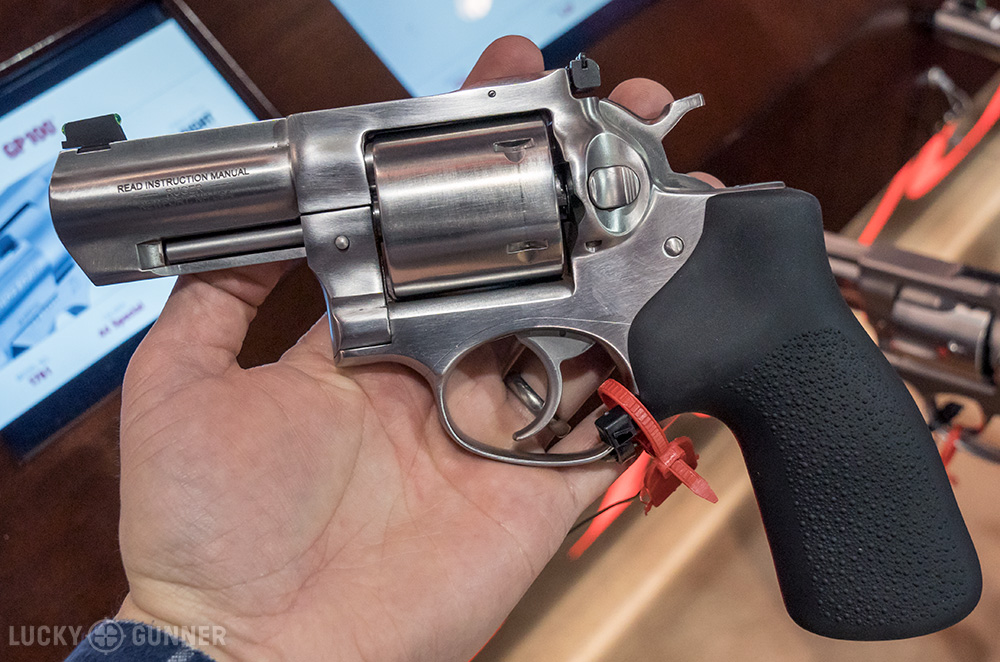
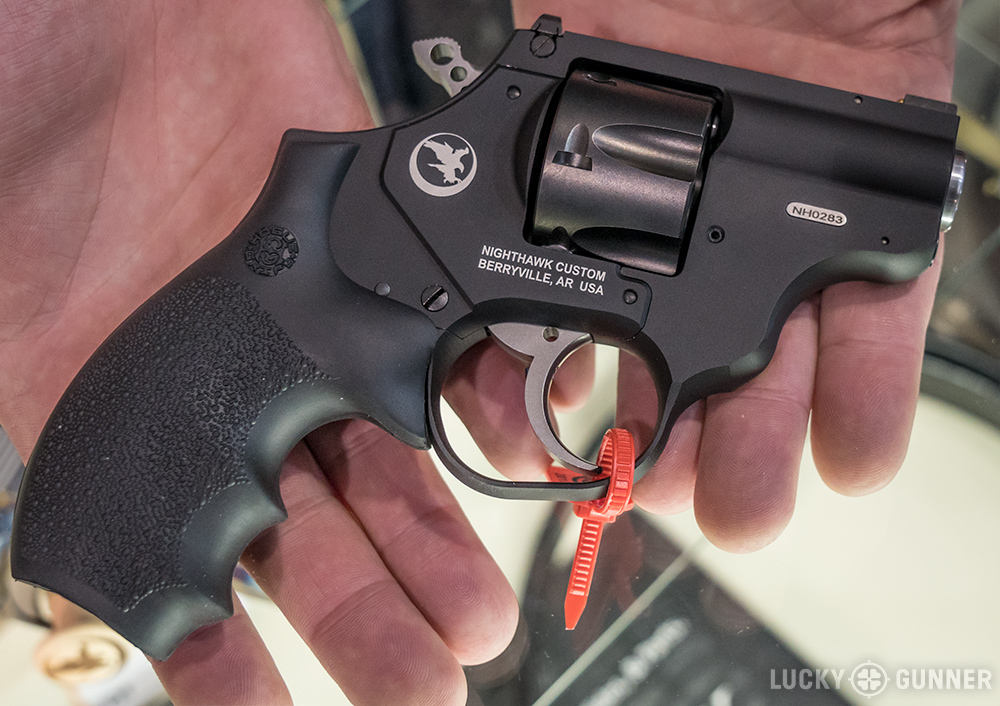
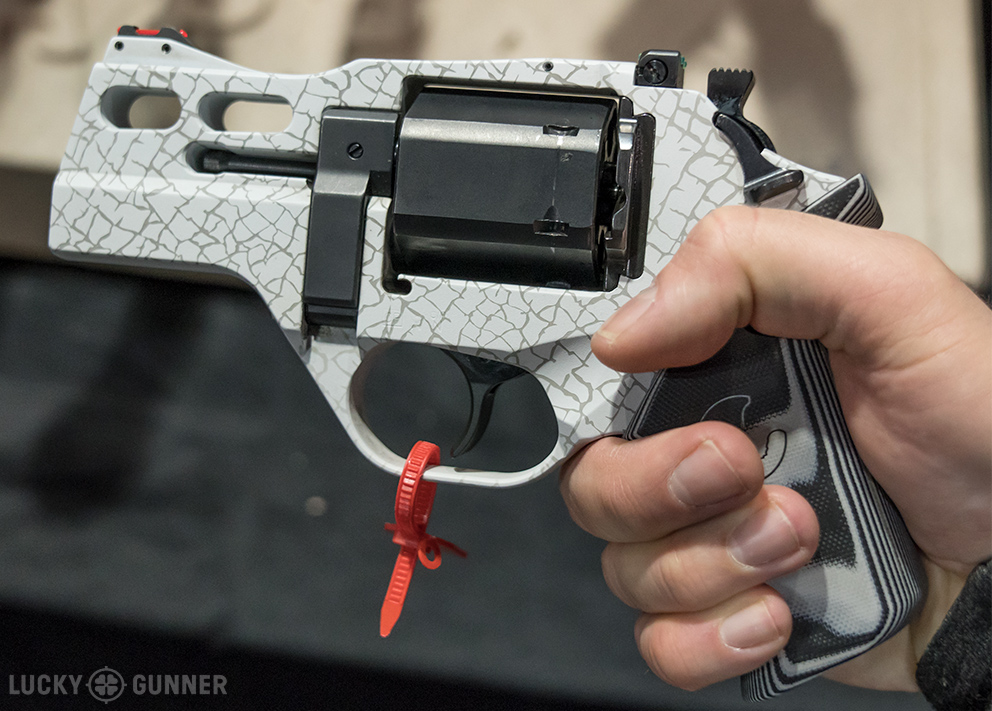
I was excited about the Colt Cobra for all of a day until I learned about the S&W 66 2.75″ and then I forgot Colt was making a revolver.
Hear, hear.
I carried the old 2.5″ 66 for many years. It was always my favorite carry gun till the Austrian plastic thing came to town, and now that I don’t look for trouble anymore . . . Now I just have to save my pennies for the new 66.
Maybe carrying a new K-frame will make me 40 years younger again? I can always hope.
My guess is that by going with 2.75″ and leaving the full length ejector rod, they save a lot of money not having to make any major manufacturing changes from the 4″ models. Just chop the barrel at a different spot, slap on the front sight and done. I’m not complaining about the barrel length, but I think S&W being cheapskates is a lot more likely than any conspiracy.
So you’re in on the conspiracy too! The tentacles of the Holster Trust reach everywhere!
I am eager to see the fps out of the 2.75″ Model 66 barrel. From tests I’ve seen, the increase in velocity between 2″ and 2.5″ is pretty negligible, but there’s a huge difference going from 2.5″ to 3″. So I am interested to find out whether the 2.75″ is closer to the 2.5″ or the 3″?
Velocity measurements for the 2.75″ Model 66 are in our review here: https://www.luckygunner.com/lounge/review-sw-model-66/
Compare to velocity numbers from this post: https://www.luckygunner.com/lounge/revolver-velocity-vs-barrel-length/
The 2.75-inch appears to be much closer to the 3-inch and 4-inch numbers than the 2 and 2.5-inch from the small sample we worked with, but every barrel is different and you really never know what you’re going to get.
Yes, I have noticed in most tests I could find that the difference in velocity between 2″ and 2.5″ is almost negligible but between 2.5″ and 3″ it really takes off significantly. That’s why I was wondering about the 2.75″ as it is in the middle and a kind of oddball length that doesn’t get tested as much. Thanks.
BTW – you have the best and most informative gun site on the web!
The 4.25″ barrels are a dodge for Canadian gun laws, which require a minimum barrel length of 105mm (~4.13″). You’ll note that Ruger offers 4.2″ barrels as well.
As Chris stated below, the 2.75″ model allows them to have a full-length ejector rod, something only previously available in a 3″ barrel. The extra 0.25″ saving in length came from eliminating the legacy spring-loaded detent in the barrel shroud that engaged the front of ejector rod. Instead, all of the new Model 66 use a spring-loaded ball detent in the crane that engages a notch in the rear of the barrel shroud.
The latter is a variant of the old PPC revolversmith trick of adding spring-loaded ball detents to the top of the crane that engage the frame under the shank of the barrel. PPC revolversmiths like Ron Power long ago figured out that if the ejector rod was not perfectly straight, the legacy factory detent at the front of the ejector rod would cause a constantly shifting misalignment between the chambers and the barrel throat as the cylinder turned. Power credited the late Fred Schimdt with the spring-loaded ball detents in the crane that became standard among PPC revolversmiths. Power got to the point where he routinely eliminated the legacy ejector rod detent in the barrel whenever he modified the crane for the ball detents. That way, it no longer mattered if the ejector rod was perfectly straight or not.
I knew about the Canadian laws and the full-length rod; I was making a joke. But the info about the lockup change is news to me. Thank you for bringing that to my attention. I knew they did the ball thing on PPC guns, but I never knew why. (When I shot PPC I just shot a standard 66, since that was what I carried.)
Now, about the Holster Trust . . .
The Sky Hawk looks great without the rails, but holy crap, that MSRP! Better be made by a German gunsmith that sat under a waterfall for a few months.
I hear you, man. There’s a reason why there aren’t more clipless 9mm revolver designs out there. They either don’t work, or they cost a fortune to make. No guarantee this one works either, but we’ll see…
I love the way the Chiappa looks!
Said the dude named Rageissues with the Hello Kitty avatar.
O_O IF ONLY s&w put their barrel on the bottom. . .and maintained roster fees, I’d be happy
In the wild, white rhinos aren’t really white. They’re actually gray. A truly white rhino could be called an albino rhino. #ALBINORHINO, there ya go, Chiappa. You’re welcome.
The new GP 100 in .44 Special personally offers me a few advantages over the .357 version. From Hornady’s 165 gr. FTX to Grizzly’s 260 grain hard cast ammo, I have a lot of options (and I hand load for practice). Last, but certainly not least, is the oft over looked shot shell. I’m outdoors a lot and there’s nothing more hair-raising than being in waist high grass with a venomous snake. The .357 shot shell patterns very poorly for me even at close range, not so the .44 Special. So, go ahead and buy a new GP 100 in .44 Special; you know in your heart of hearts that you want one. https://uploads.disquscdn.com/images/c42df19130d7dfcc7bd4b1a849433251b48cd6c80ce16cf424866b113bed1e8a.jpg
Buffalo Bore offers some interesting loads too.
It’s a bit heavy though for everyday carry where it’s hot. If I was going to buy such a gun, I might get the S&W M69 with the 2.75″ barrel instead. Not much more money and it can handle both 44 mag and special.
Good job! Thanks.
Give me my S&W j frame 9 mm. . . 940 and pay the roster fee S&W!!! we want CC. . .in 9 millimeters on a j frame. . . in EVERY STATE IN THE UNION. . . like the 986, but put it on a fluted j frame. . . now I’d said it three times and that should be plenty. . . and remember SHROUDED TRIGGER IN DAO LIKE THE CENTENNIAL . .
#maintainrosterfees
The smiths look unfinished. I hate the flat look and prefer the old school blued steel or polished stainless. Seems like everything has a flat cheap looking finish these days…Just saying.
Fully concur. S&W seems to abandoning many of the cosmetic hallmarks that distinguish them from, say, Taurus and Charter. If I’m dropping $900 on a revolver I’d prefer it hold on to the look too. (Hear that, Colt?!) It’s part of what makes them classics. Further, I despise the black hardware they’ve begun using as well. I honestly don’t mind the lock, but black cylinder releases and screws on a matte finish is a big turn off.
Further, it’s probably cheaper and quicker for them to produce them this way now. The build it and they will come doesn’t work with me. I know what I like and don’t like.
And I like a fluted barrel. They are starting to move away from those. I don’t care for the flat, unfluted barrels. Old school is beautiful and classy to me.
I had a model 15 at one time. Beautiful gun. 4″ blued with an action job. Anyone could keep in a 3″ bull at 25yards with wadcutters. I also had a 4″ blued python. I wish I still had that one too.
Chris, did you hear anything about a 3″ version of the Korth Sky Hawk? Nighthawk has been listing both options on their website. That extra inch of barrel would make it of possible interest to me, while 2″ snubbies are a personal no-go. While $1700 certainly ain’t cheap, the next model up, the Mongoose, is $3500. (Not to mention that the prices on many Nighthawk 1911s are approaching $4000.)
And if the 9mm rimless extractors really work, freedom from moon clips would obviously be the big sales point for a small carry revolver in that caliber, as you noted. Don’t get me wrong about moon clips, I have an S&W 625 and 929, but for me that’s range stuff, not carry stuff.
I have seen that they had the 3-inch listed on their site but I didn’t get any details on it. They only had one Sky Hawk with them at SHOT and it was the 2-inch. I will try to remember to ask them about that. I would dig a 3-inch model, but curious what you have against a 2-inch version.
I don’t shoot snubbies well, that’s all. I have not had one for about ten years now. On the other hand and contrariwise, I had a S&W 3″ Chief’s Special (Model 36) many years ago that is one of those “boy do I wish I had not traded that one” guns.
My house gun is one of the new Model 66 4.2″ barrels loaded with 38+P, but it sure seems too big and heavy to carry to me. My other revolvers are bigger, and my other guns are 1911s. Not personally interested in compact striker-fired guns, again, nothing against them, just not what I want. I have also had three SIGs, and DA/SA is ok, but I don’t have them any more, either.
So: I am not carrying at the moment, but a 3″ Sky Hawk seems like a possibility, the added inch would add a lot of confidence and interest in training and practice.
I had a Ruger Security Six in 2.75″ .357. A flame thrower. If I didn’t hit him, I’d probably set him on fire. And be blinded if it was dark. Both of us. 🙂
Yeah, the gun I traded the Chief’s Special in on was a Colt Trooper 357 4″. This was early days for my shooting experiences, early ’70s. The hot 357 125gr loads of the day would make a blue ball of flame, tapering to a yellow point, about 4 feet long, totally visible in daylight. Not actually a lot of fun to shoot, I don’t think I even shot a full box, but I was “moving up”, man!
I had a 4″ Python once. It wasn’t as bad as the Ruger.
I’m a CHiappa Rhino fan, but after I had technical problems with two rhinos I did a refund trade since both errors were flukes where they both went out of time within 50 rounds fired… so bizarre. After that I did research on the sort of Chrony results people were getting, then I abandoned the idea. I thought, what this gun really needs is a 3 inch model.
Bam… a three inch model.
But I’m curious? How is this an insult exactly? Do you actually think all three inch models will look like this? that’s crazy, no company intentionally makes a product that people ask for and then make you buy it with a skin no one wants. They’re clearly just showing off their new model with a new feature they’re including: patterned cerakoting. Clearly they want money. I don’t think they are thinking someone would intentionaly go that far to misinterpret their new product as being “an insult”.
That’s just crazy.
I am sure Chiappa will eventually release the 3-inch model with a standard finish but for now, the Cerakote finish is the only option. It is also the only 3-inch option shown in their 2017 catalog. The rep I spoke with at their booth at SHOT show could not tell me when or if other finishes would be available. I find it insulting because it is ostensibly a tool for self-defense but the company seems to think that it needs to look like a child’s toy in order to attract customers. If people were actually asking for this kind of finish, it would be a little different, but I think it shows a complete lack of understanding of what the customers need/want in a defensive revolver. Kind of like when gun companies think the only way to market to women is to paint everything pink. It’s insulting and condescending and it makes it difficult for me to take Chiappa seriously as a manufacturer of life saving equipment. That, and the fact that they don’t seem to be interested in making products that actually function reliably, as you have discovered.
The new S&W PC 642 is clearly a (mercifully debranded) reissue of the short-lived PC Wyatt Deep Cover 637, but of course now based on a 642 over a bobbed-hammer 637 and losing the clip grips. I own the WDC 637 and prefer its bobbed hammer to the enclosed 642, but in the negative column it has the odious internal safety lock. I assume the trigger is about the same; ca. 10 pounds but smooth as glass, very shootable and great for its intended use.
Man that Chiappa is fugly! And the price on that ugly Korth oh my ? Great shot coverage and reviews as always ? Thanks
I don’t think I’ve heard of the Rhino– till now. Now I want the Rhino 60 in .40 and .357 😉 Thanks for sharing.
Typically.. how much difference is the MSRP vs “find in an avg st ore” price I wonder?
Also.. I know the white rhino is a limited edition thing.. But is that “this coating colour is limited but the 3inch will be available in general colours from now on” or “This is the only time we’re probably making this 3inch. and it’ll be this coating.”
MSRP vs. actual price varies a lot. Typically, you can knock off at least $50 from the MSRP, but sometimes it’s a lot more. I have noticed that Ruger’s MSRPs seem to be a bit more inflated than other company’s. A quick look at GunBroker search results usually gives an idea of the common retailer prices for a given model.
They’re all missing the sweet spot. 3″ 9mm revolver like the old Smith 547 without moon clips. Not 2″ because that’s good for maybe, what, twenty feet? Not 4″ because that’s a full-size open carry or range only gun. Not 3″ in a revolver that weighs thirty ounces. Nice, lightweight 3″ 9mm; and, as Charter Arms provides, under five hundred dollars, please. I love Smiths, but eight or nine hundred dollars for a name is just ridiculous.